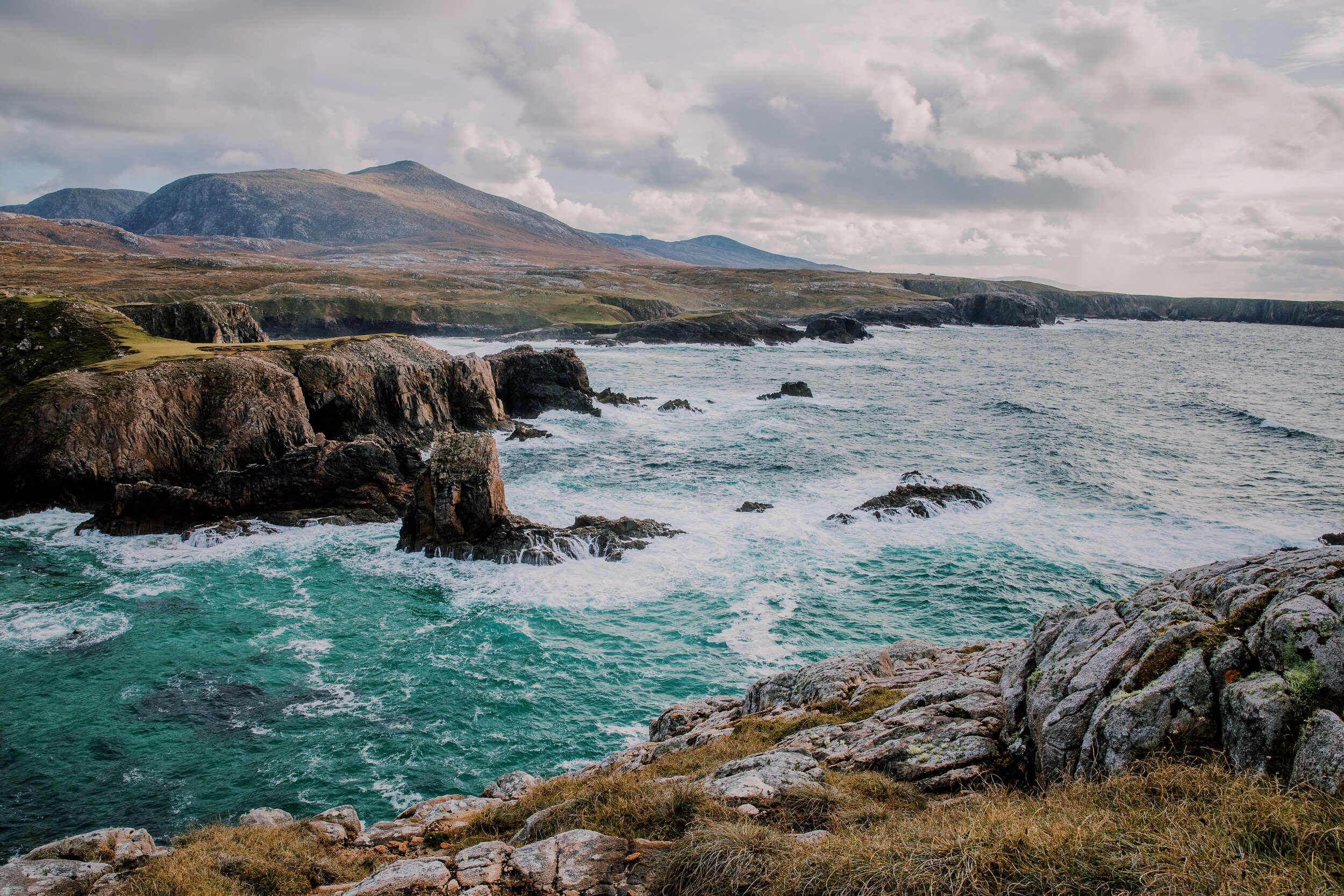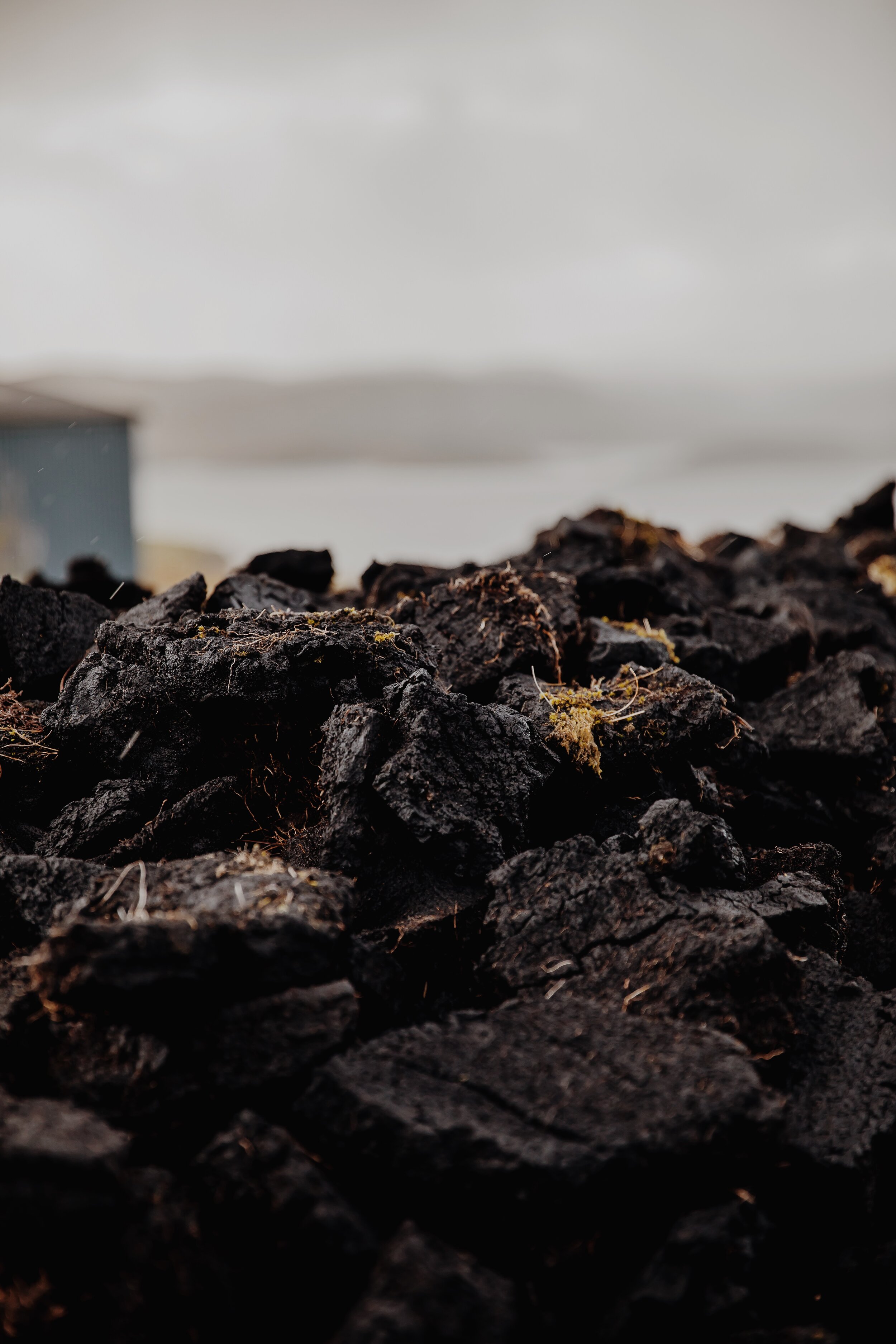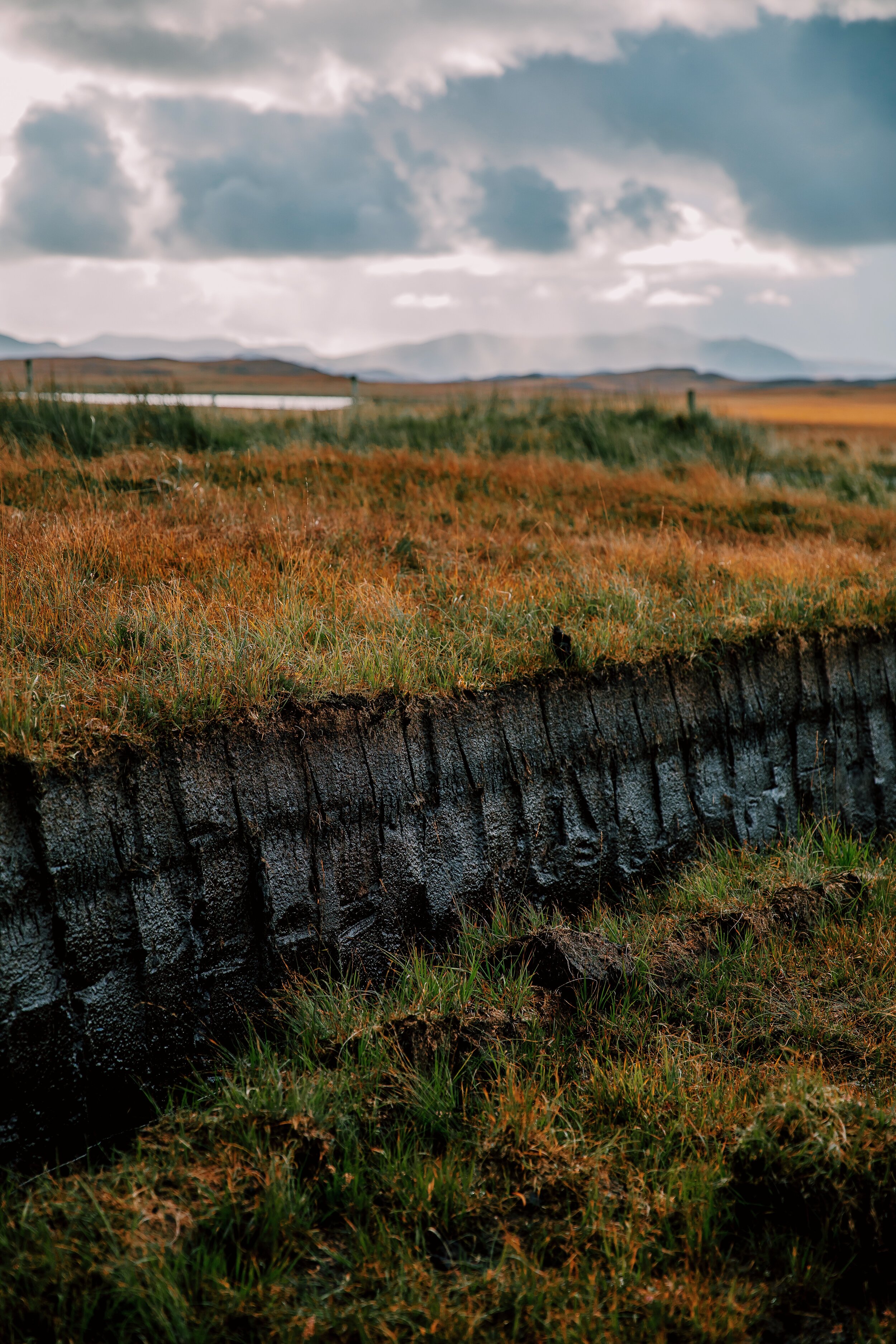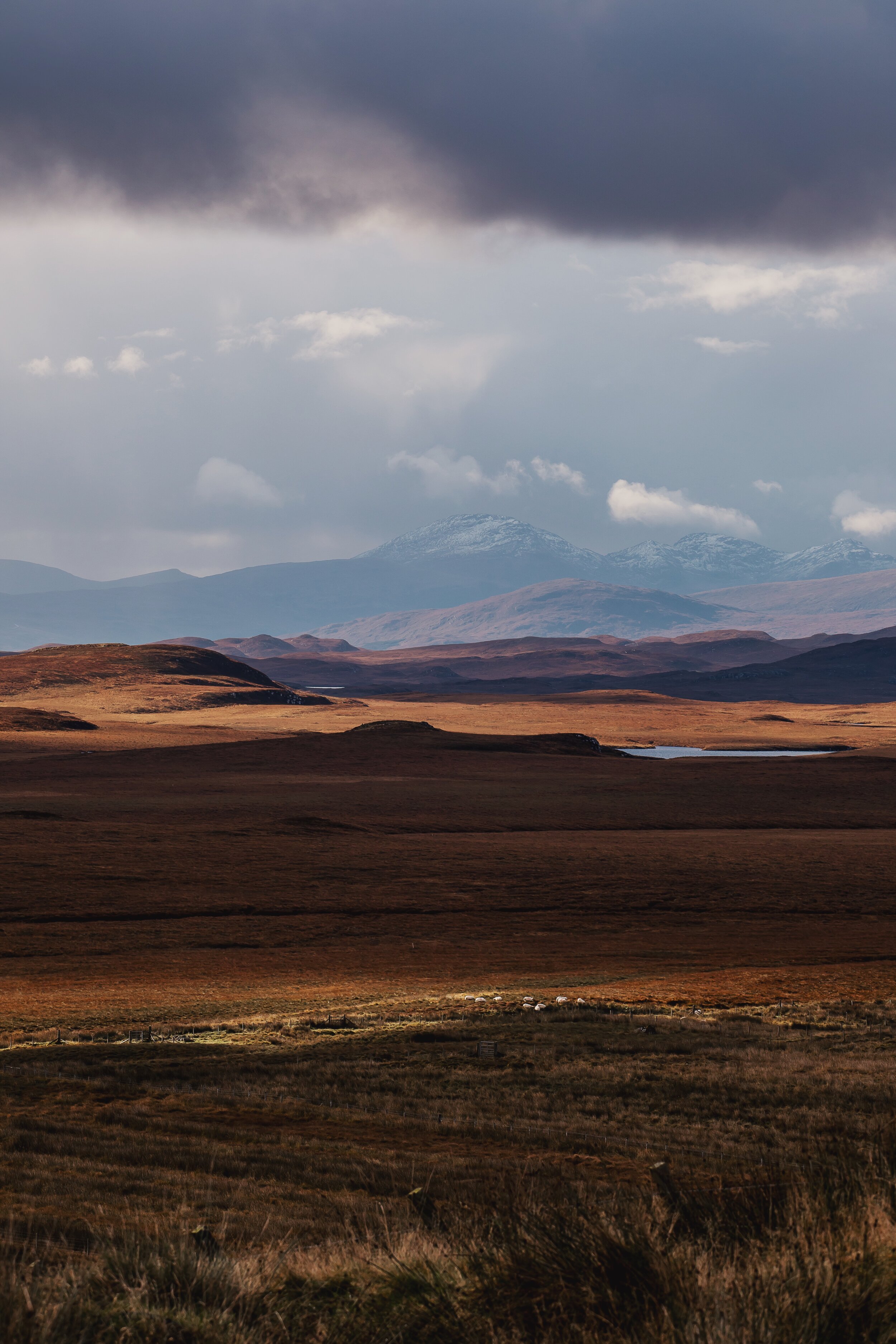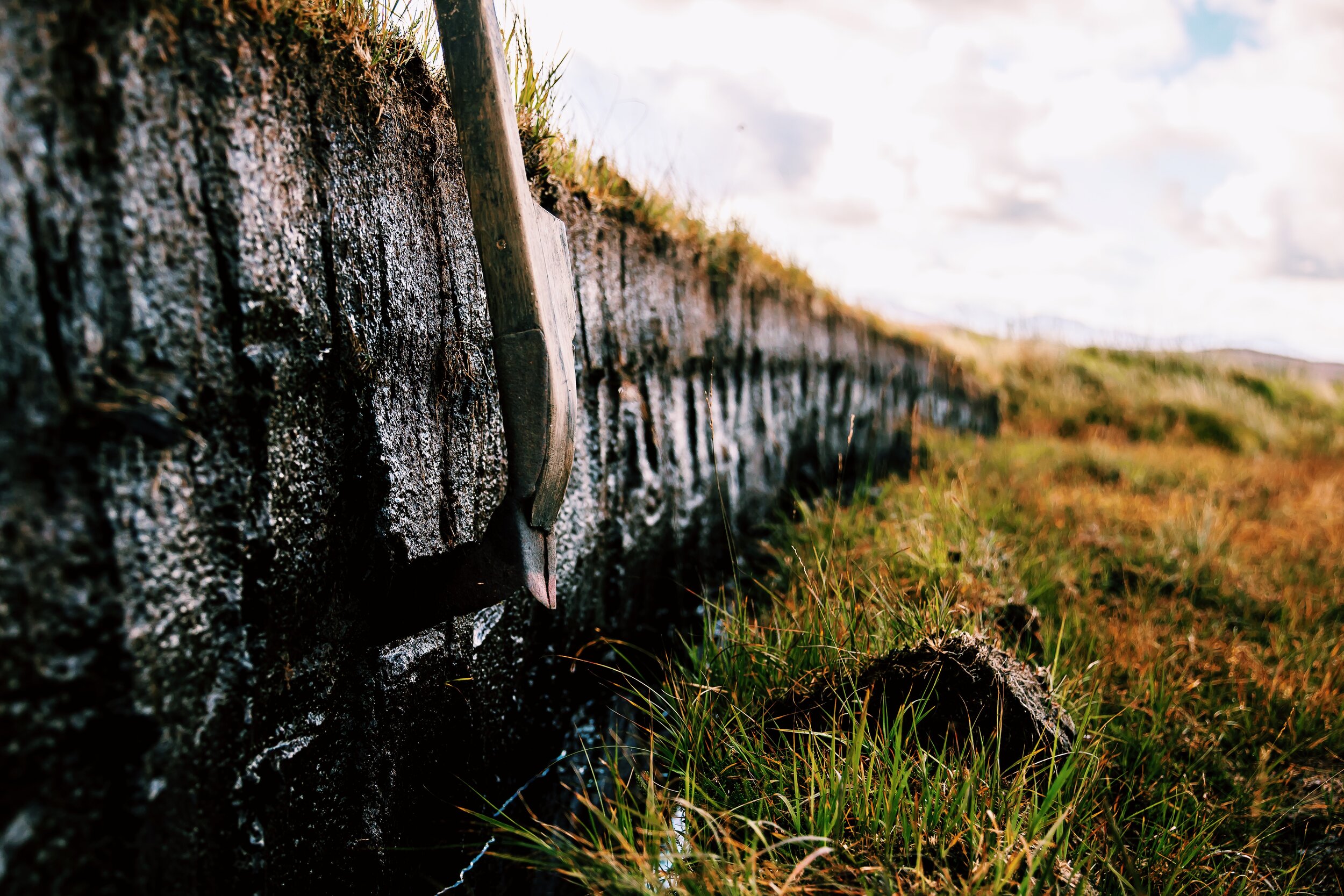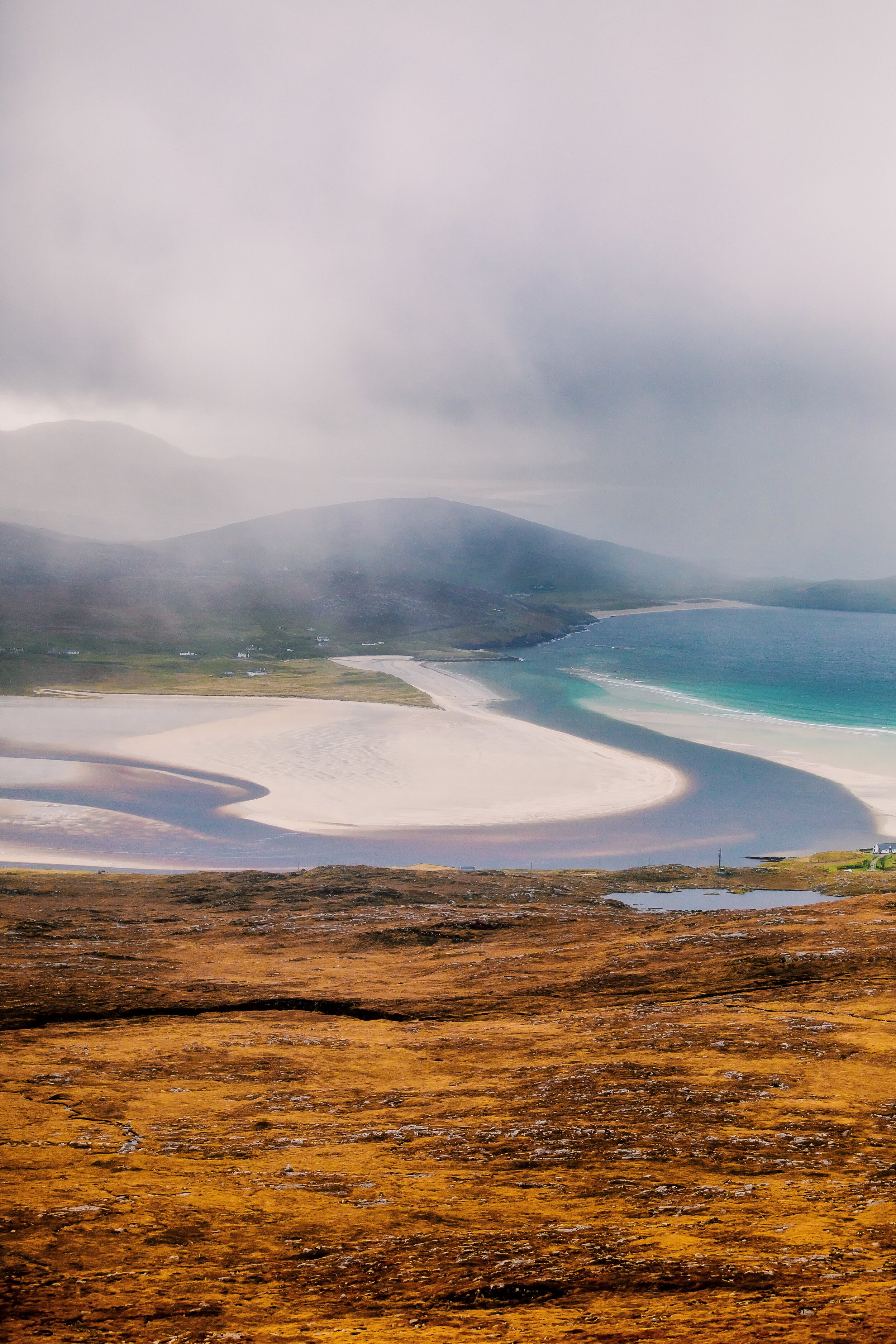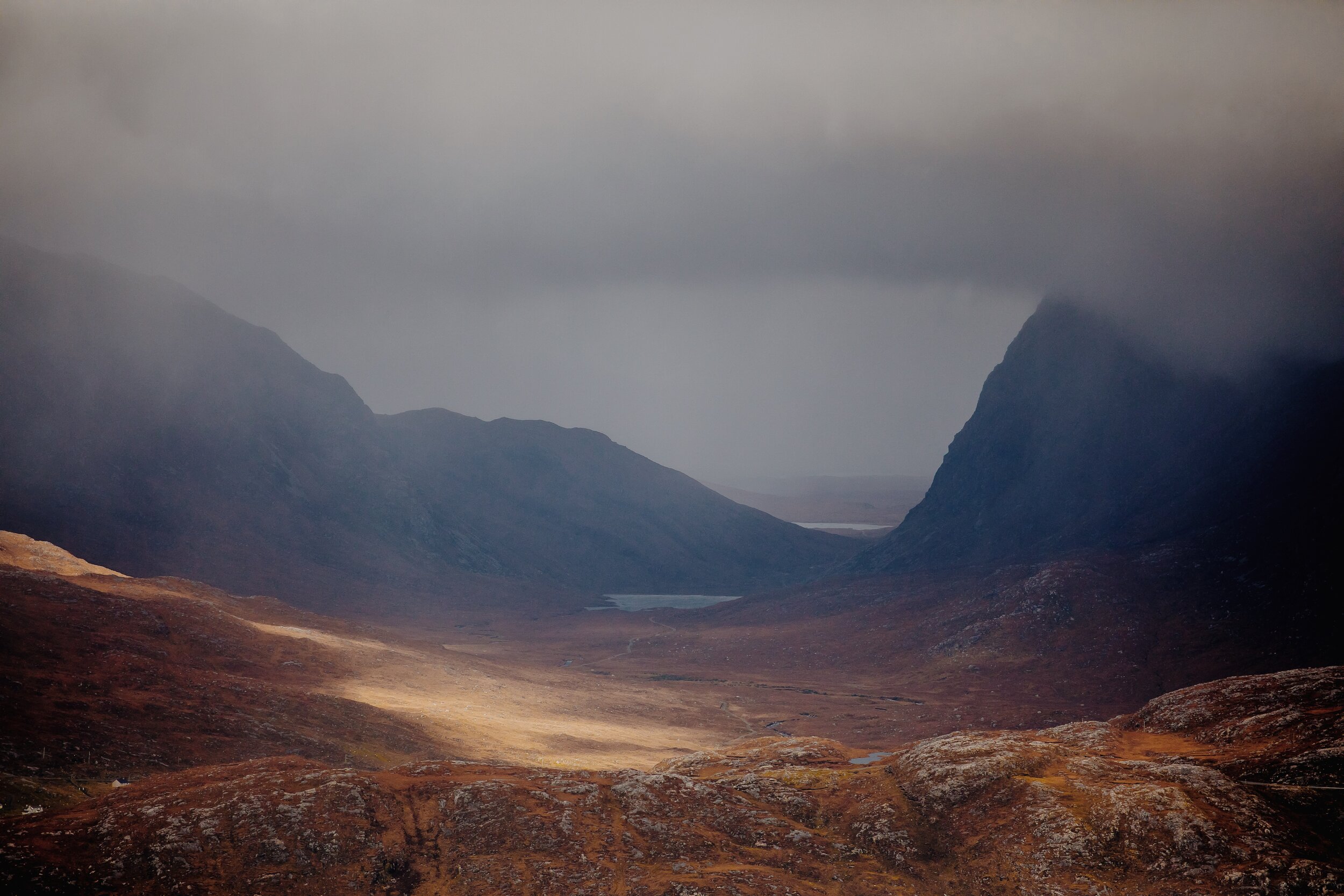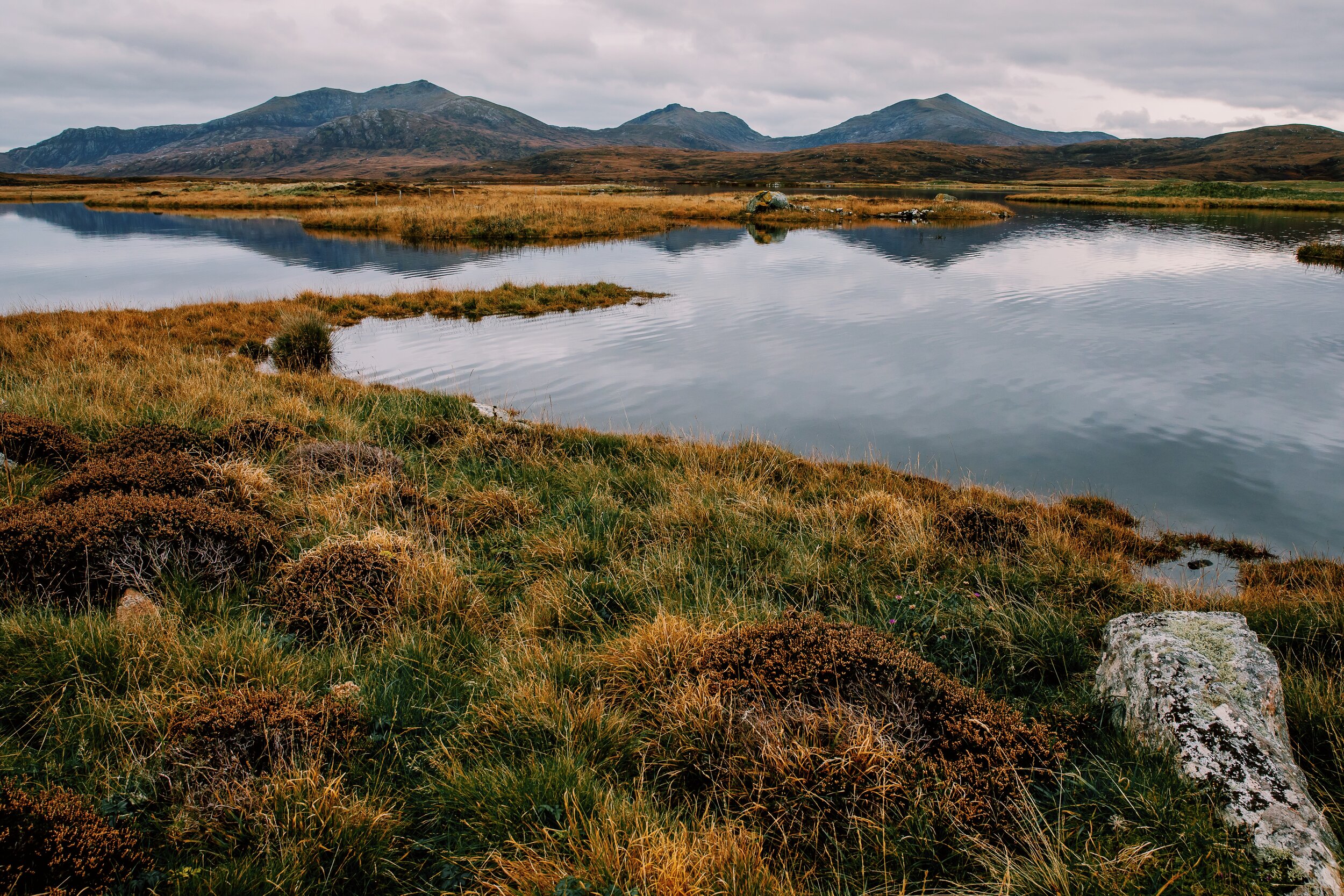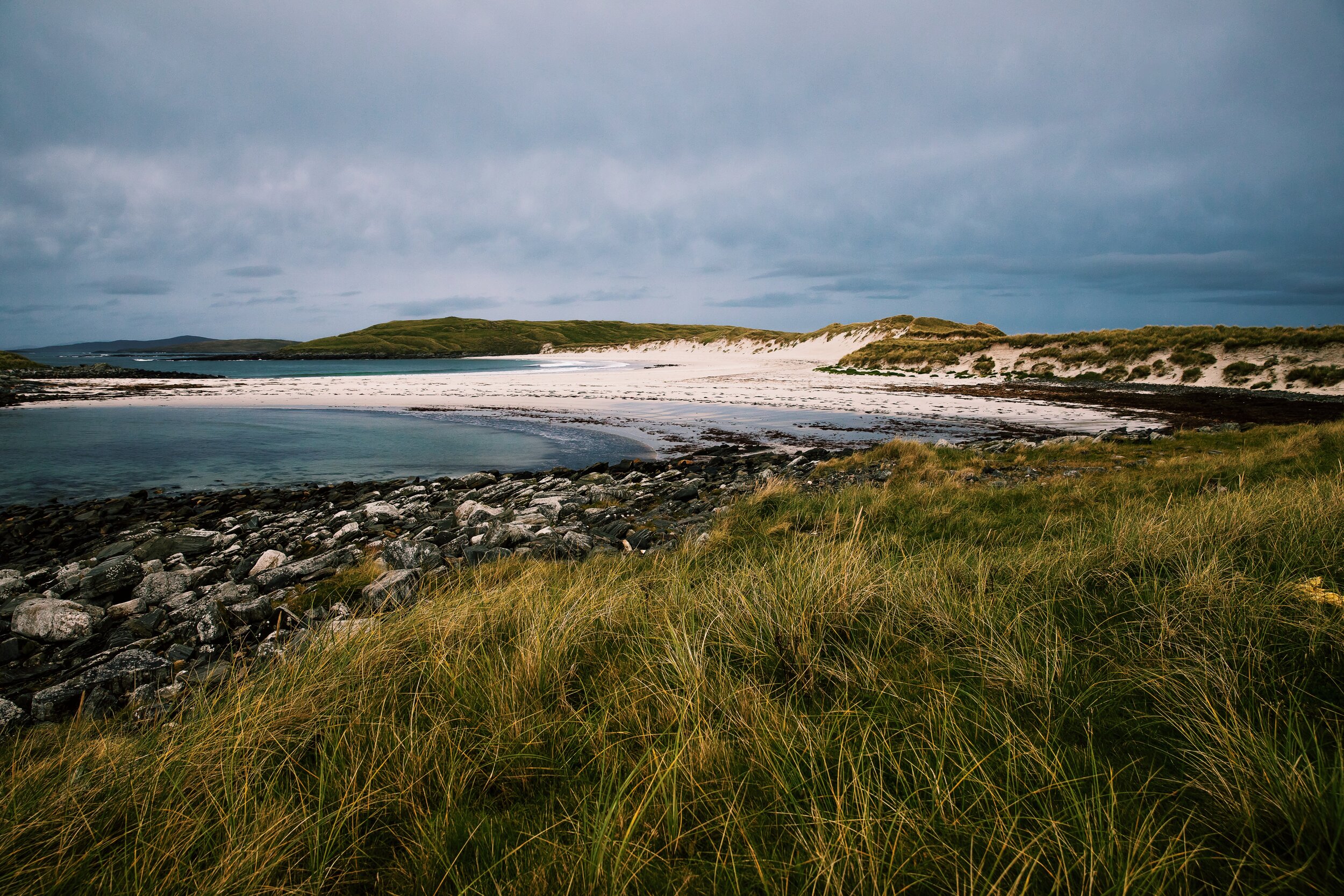From a photography perspective, the Outer Hebrides are the jewel in Scotland’s crown. Very few places in the world will rival the sight of the turquoise waves breaking against the golden sands of the island’s shoreline. But these islands are more than just a pretty face, they also have a spirit which is brought to life through their Gaelic language and culture.
I’ve always been captivated by the Gaelic language and culture but my Gaelic is limited. Both my Grandmothers grew up in Argyll and came from Gaelic speaking families but sadly the language wasn’t passed on. My maternal Grandmother was an Ileach who didn’t speak any English until she went to school. So with this in mind, when I was asked to travel to the Outer Hebrides to discover the culture and language of the islands last year I was delighted.
Part of the charm and adventure of the Outer Hebrides is the 40 mile sailing across The Minch to get there. There are several different routes you can take to the Outer Hebrides, on my trip I caught the Calmac ferry from Ullapool to Stornoway. Steòrnabhagh is the ‘capital of the Western Isles and is located on the most northerly island in the archipelago, Eilean Leòdhais (Isle of Lewis).
Gaelic is evident as soon as you step foot on the island, the street names and signs are in Gaelic and the language can be heard spoken in shops and restaurants. As I drove through Lewis I could see the Gaelic culture woven into the very bones of the island with evidence of centuries of tradition scattered all over the landscape. The remains of Blackhouses (‘taighean-dubh’ in Gaelic) can be found all over Lewis and up until the 20th century these stone buildings were the traditional homes of crofting families and their animals. Man and beast would live under the same roof to provide warmth and reduce the need for extra buildings. The houses consisted of thick dry stone walls and a thatched roof. Despite a constantly burning peat fire there were no chimneys in blackhouses and rarely windows. This may seem very primitive to people living in the 21st century but the houses were well suited to this way of life. One of the best places to visit to see blackhouses is Gearrannan Blackhouse Village at Carloway.
Blackhouses may be a thing of the past but the tradition of crofting is still alive all over the Highlands and Islands of Scotland. Crofting came about after the atrocities of the Highland Clearances and in basic terms, a croft is a small area of land used for sustainable agriculture. Vegetables will be grown on the most arable land on the croft and livestock will be farmed on the rougher land which is usually shared between several crofters from a village or township. There is a wonderful community spirit within these townships with families working beside each other for generations. Gaelic stories, poetry and songs have been passed down from forefathers and are stilled shared today at Ceilidhs. When I think of a Ceilidh I think of music and dancing but in the rural communities of the Outer Hebrides a ceilidh can refer to a gathering on a croft where stories are told. The expression ‘thig a cheilidh’ means come and visit.
Peat has warmed the homes of the islanders for thousands of years and peat cutting is still an important part of island life. If you travel through the moors of the Hebrides you’ll be sure to see stacks of peat drying out over the summer months. Once the peat is dry it will be taken back to the crofts and stacked to make a ‘cruach’ ready to fuel the fires over the winter months. Cutting peat is labour intensive, especially taking away ‘am barr fhad’ the top layer of ground. Once this is removed the softer peat can be cut into sections using a ‘tairsgear’ which is a long handled tool with a blade used for turning and cutting the peat. Like much of crofting life this is hard work but also a social event which brings the whole community together.
People have lived in the Outer Hebrides for millenniums, perhaps as far back as 8500BC. Around 5000 years ago the inhabitants of the islands erected some of the most impressive megaliths found anywhere in Britain, Calanais Standing Stones which tower to 4.8 meters. The rocks that the Calanais stones are made from are some of the oldest in the world at around 300 million years. Like many neolithic sites no one really knows why the stones were built or what occurred here but it must have been a site of real significance to the people who constructed it. There are also at least another 15 stone circles nearby.
The Gaelic language is very descriptive especially when it comes to the landscape. The Gaelic word for beach is ‘tràigh’ and this will often be followed by words such as ‘bàn,’ ‘fionn’ or ‘gheal.’ These words all mean white or fair and describe the colour of the sand. The beach in the photograph below is Uig beach, if you’ve travelled through the Hebrides you’ll have perhaps come across a couple of places named Uig. I always wondered what it meant so I did a bit of research and discovered it comes from the Old Norse word for bay.
The Gaelic language has dozens of words for hill or mountain but probably the most common of these is ‘Beinn.’ Other common words for hills are ‘Sgùrr (jagged peak), ‘Stob’ (stake) and ‘Stùc’ (pinnacle). For small, rounded hills ‘Cnoc,’ Cnap’ and ‘Meall’ are common. On Harris, which is the most mountainous of the Outer Hebrides, I climbed Beinn Losgaintir (Ben Luskentyre) which gives the most stunning views over the famous Luskentyre beach. The cloud was low the day I summited the mountain but the views between the mist were incredible. The mountain beside Beinn Losgantir is called Beinn Dubh (‘Dubh’ means black or dark) and probably gained its name due to the amount of cloud which covers the summit.
The colours of the Harris landscape are glorious and inspire Harris’s most famous export, Harris Tweed (Clò Mòr). Harris Tweed has its very own Act of Parliament which insures that every single part of the Tweed making process is undertaken on the island. The tweed is woven in the homes of the islanders using pure virgin wool dyed and spun on the crofts. The traditional art of weaving has been handed down through the generations meaning that if you buy a piece of Harris Tweed you are getting more than a beautiful piece of fabric, you are getting part of the island.
Like all islands, water (uisge in Gaelic) is at the centre of Hebridean life. The rich seas surrounding the islands produce some of the best seafood in the world and a livelihood for the island’s fishermen. The pure water of the rivers and burns are vital to the quality of the whisky (uisge beatha) and gin produced here. In recent years the water has also played a pivotal part in bringing a wave of tourism to the islands. Photographers like myself visit to photograph the coastal scenery but it also draws in a lot of water-sports enthusiasts particularly in recent years with the rise in popularity of wild swimming and paddle boarding.
Nowhere is water more widespread than in Uist with its infinite number of lochs which infiltrate the landscape. Uist is made up of 6 unique islands that are connected by causeways. Furthest north lies Berneray then running south from here you have North Uist, Grimsay, Benbecula, South Uist and Eriskay. The landscape here is so unique and beautiful, to the east you have hills and moorland…
And to the west, at the edge of the wild Atlantic, miles upon miles of breathtaking beaches.
Any visit to Scotland’s Gaelic Islands (Eileanan nan Gàidhlig) will be memorable but learning even a little about the language and culture will just enhance your experience. To get you started here are a few basic phrases for you to practice.
Madainn mhath - Good morning
Feasgar math - Good afternoon/evening
Ciamar a tha thu an-diugh? - How are you today?
Tha mi gu math, taphadh leat! - I am well, thank you
Tha i brèagha! - It is beautiful!
